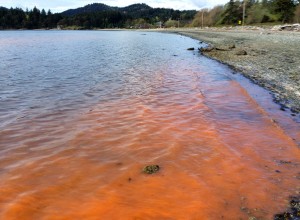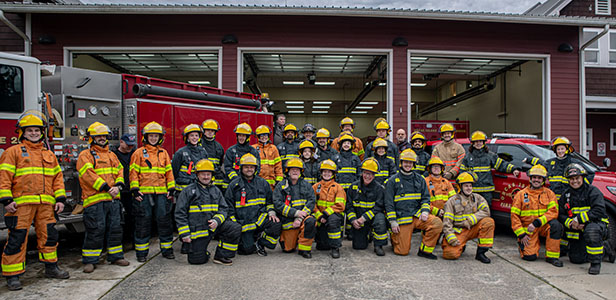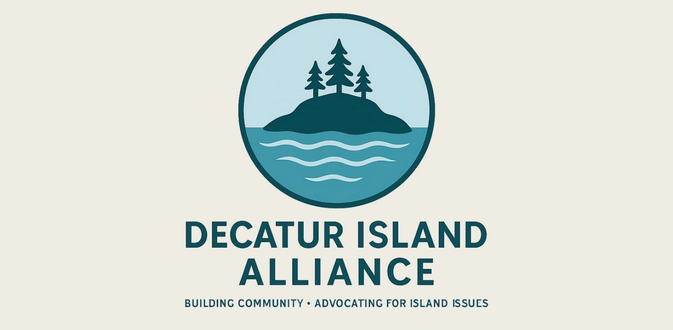(Editor’s Note: Orcas Issues has received updated information regarding Red Tides. See related story HERE.)
— from Alejandro R. Torres —
An early morning stroll along East Sound’s Crescent Beach revealed a strange anomaly in the usual vista; the waves lapping the shore were a brilliant rust color. Known as red tide, the natural event is a common phenomenon along beaches where the water is shallow and has a chance to warm. It is caused by a large scale algae bloom. Such blooms can cause massive fish die-offs. The biotoxins can kill birds and mammals, including humans. Consumption of contaminated shellfish can be deadly since cooking does not destroy the these biotoxins produced by the algae.
According to NOAA, the National Oceanic and Atmospheric Administration, “Harmful algal blooms, or HABs, occur when colonies of algae—simple plants that live in the sea and freshwater—grow out of control while producing toxic or harmful effects on people, fish, shellfish, marine mammals, and birds. The human illnesses caused by HABs, though rare, can be debilitating or even fatal.”
Low salinity and high levels of nutrients in the water can also trigger these explosive algae growths. Scientists have begun to study whether or not global climate change is beginning to have an effect on the frequency of these red tides. A check of the Washington State Department of Health website shows that harvesting of all shellfish is banned in Eastsound and butter and varnish clams only are banned throughout San Juan County at this time.
**If you are reading theOrcasonian for free, thank your fellow islanders. If you would like to support theOrcasonian CLICK HERE to set your modestly-priced, voluntary subscription. Otherwise, no worries; we’re happy to share with you.**









Alejandro: It might be useful to the public to have determined what species of phytoplankton is causing the “red tide”. Last year, it was Noctiluca, a non-toxic bioluminescent dinoflagellate. It was interesting to watch the cells die and wash up on shore as white “foam”.
come to the BirdFest, and talk to the experts about red tides. Dr. Russell Barsch of Kwiaht is a speaker for example; and Wolf Hollow and the Stewardship Network will have booths at the Farmers Market opening today especially for BirdFest.
See you there…